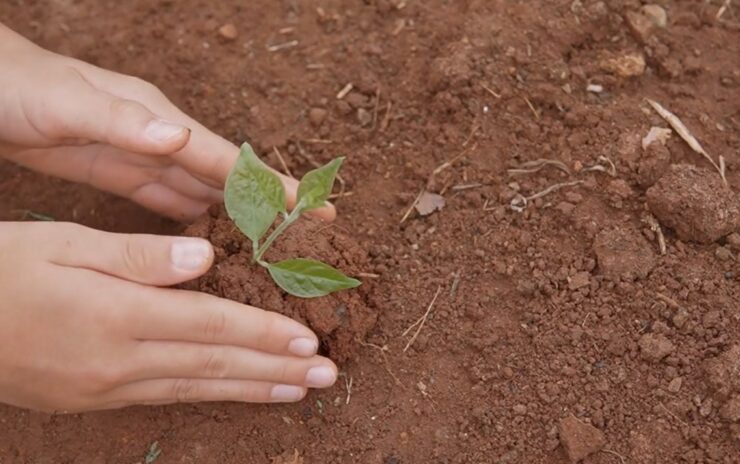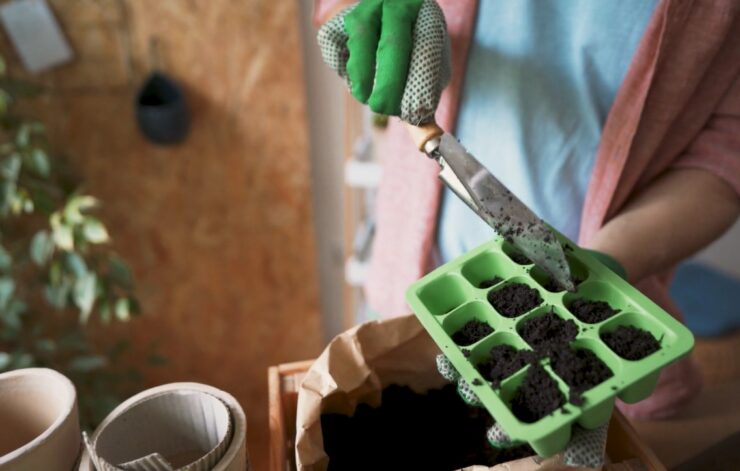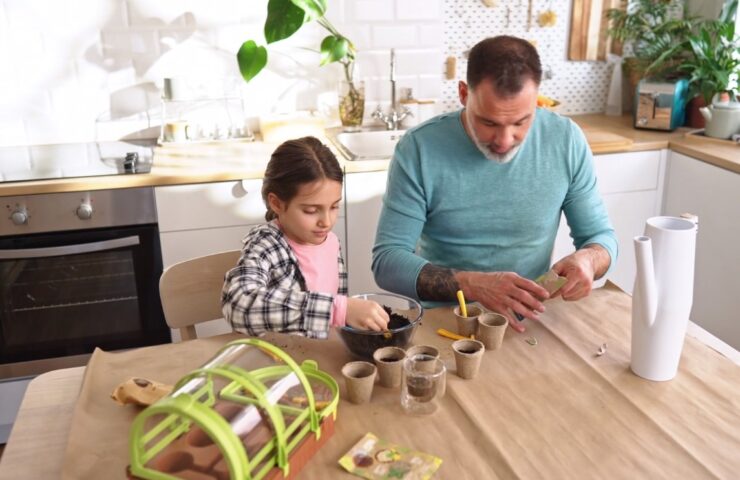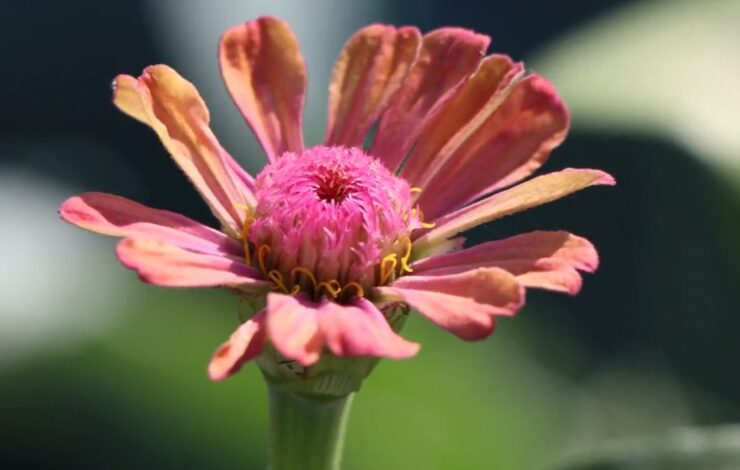Mexican Sunflowers, also known as Tithonia Rotundifolia, are beautiful and easy-to-grow annual flowers that can add a vibrant pop of color to any garden. If you’re new to gardening, or simply looking to add some variety to your existing garden, they are a great option.
In this article, we’ll provide you with a beginner’s guide to growing Mexican Sunflowers, including tips and tricks for planting, nurturing, and maintaining these stunning flowers. From selecting the right soil to choosing the perfect location, we’ll help you cultivate a beautiful and thriving garden full of Mexican Sunflowers.
The Essential Characteristics of Mexican Sunflowers

They are a beautiful sight for any garden! They are also known as Tithonia diversifolia and are native to Mexico. These sunflowers can grow up to 6 feet tall! Their orange flowers have dark centers, and their leaves are rough and hairy. The roughness helps them deflect water and makes them drought-tolerant.
These flowers are annuals, so they must be replanted every year. Plant the seeds in a sunny spot with good drainage. Water regularly and watch out for pests like caterpillars and aphids. Insecticidal soap or neem oil can help deter them.
These sunflowers attract lots of pollinators like butterflies and bees. What a great addition to any pollinator garden!
Choosing the Right Variety of Mexican Sunflowers
With their bright oranges, reds, and lengthy flowering season, picking the right kind is key. Here are ways to pick the perfect Mexican Sunflower:
Do you want tall or short? Some can reach 6 feet, while others are more petite.
What about your growing zone? Think about climate and weather patterns for a variety that will thrive.
Do you prefer single or double blooms? They come in both – each with its unique beauty.
By considering these points, you can pick the right kind of Mexican Sunflower that will make your garden look sensational!
Benefits of Growing Mexican Sunflowers

They add a stunning and vibrant touch to any garden. Plus, they have many advantages. Here’s what you should know:
– Attract pollinators: Bees, butterflies, and hummingbirds love them! So if you want to bring pollinators to your garden, they are the way to go.
– Control pests: Their natural properties help keep harmful insects away. No need for chemicals!
– Improve soil health: Their deep roots help break up hard soils. Plus, after they bloom, you can cut up their leaves and stems and use them as natural mulch.
– Add color and variety: You can choose between yellow, orange, and red. And their mesmerizing blooms make for beautiful floral arrangements in the home.
If you’re looking for a plant that’s easy to grow and has plenty of benefits, Mexican sunflowers are the perfect pick!
Preparing for Planting
Before you start, there are a few steps to take. Deciding the planting spot is one. Then, check the soil and add mulch.
Below are handy tricks for prepping for Mexican sunflowers. Enjoy!
When and Where to Plant Mexican Sunflowers

They come with bright orange petals and attract pollinators like bees and butterflies. Here’s a guide on when and where to plant them best:
When? Late spring or early summer after the last frost date!
Where? They prefer well-drained soil and full sun exposure. Space is important, as they can get up to 6 feet tall. Make sure to plant them away from other plants, as they spread out.
Soil Preparation for Mexican Sunflowers
They are a gorgeous and easy-to-grow addition to any garden. Soil preparation is vital for planting these blooms. Here are some tips for this task:
- They prefer soil with a pH level between 6.0 and 7.5
- Clear any rocks, debris, or weeds.
- Add organic matter like compost or aged manure – this will help with soil structure and nutrient absorption.
- Gently till the soil to 8-10 inches deep to aerate and break up compacted soil.
Following these steps will give your Mexican Sunflowers the best chance of growing healthily and with stunning blooms.
Starting Seeds Indoors vs. Direct Sowing

Should you start Mexican Sunflower seeds indoors or sow them directly in the garden beds? It depends on your climate, soil, and the plant’s specific needs.
Starting Seeds Indoors:
If you live in an area with a short growing season or unpredictable weather, starting seeds indoors is best. This way, you can control temp, humidity, and light. It also increases germination and produces healthier plants.
Direct Sowing:
In warm climates with well-draining soil, direct sowing works. It’s less time-consuming and builds stronger roots. Plus, plants become more adapted to your garden’s conditions. Pro Tip: Prep the bed by weeding, loosening soil, and adding compost or organic matter for better water and nutrients.
Planting and Maintenance

You’ll need the right kind of soil. Nutrient-rich, that is. And don’t forget the sun exposure!
Also, make sure your soil drains well, and water your plants often. Here are some tips to help you plant and care for your Mexican Sunflowers. Enjoy!
Planting Mexican Sunflower Seeds
Growing them is great for new gardeners! Here are some tips to make it easy:
Pick the right spot. They love the sun and well-drained soil. 6 hours of direct sunlight each day is best.
Plant the seeds 1 inch deep and 6 inches apart. Water them well to help them sprout.
They need regular watering – once a week is good. Deep watering helps them stand in hot weather.
Once they reach 10 inches, pinch the growing tips for bushier growth. Deadhead for new blooms all summer.
Harvest when they are in full bloom – early in the morning is best.
How to Care for Mexican Sunflowers

Choose a spot with full sun and good drainage. Plant the seeds or seedlings after the last frost. Water them regularly, once or twice a week. Cut off dying flowers to keep blooming. Prune them back by one-third in the late spring. Put mulch around the base to keep moisture in the soil and stop weeds.
Watering and Fertilizing Mexican Sunflowers
Watering them is key for their healthy growth and vibrant blooms. Give them deep watering once a week, or more often in hot and dry conditions. Too much or too little water could lead to root rot or wilting. Water at the base of the plant – not the foliage – to avoid diseases or fungal growth.
Fertilize every two to three months during the growing season. A 10-20-10 mix has high phosphorus, great for strong roots and blooms. But watch out for over-fertilizing – too much could cause salt build-up, damaging the plant. Compost is an effective alternative to inorganic fertilizers, giving plant-rich nutrients.
Dealing with Common Problems
Growing them can be tricky. To make sure they thrive, you must know the common problems that might occur.
Here are some of the most common challenges and ways to deal with them.
Preventing Pests and Diseases
Here are some tips to stop pests and diseases:
- Pick soil that drains well. Give your plants enough sunshine and water.
- Rotate crops yearly to dodge soil-borne diseases.
- Make sure air goes around your plants to stop fungal pathogens from forming.
- Don’t fertilize too much – it can weaken the plants and make them prone to disease.
A few regular pests of Mexican sunflowers are aphids, spider mites, and caterpillars. Get rid of them with insecticidal soap or neem oil. Or, use water or your hands to remove them.
Check your plants for yellowed leaves, wilting, or other symptoms of the disease. Treat them quickly to stop the disease from spreading.
These tips will help you prevent pests and diseases and have thriving Mexican sunflower plants!
Treating Common Mexican Sunflower Issues

Powdery Mildew: A fungal infection that causes a white powdery coating on leaves. To treat: Remove infected leaves. Use fungicide.
Aphids: Tiny insects which suck sap from leaves. To treat: Use a strong stream of water or insecticidal soap.
Root Rot: Happens due to overwatering. Wilting & root damage. To treat: Remove the affected plant. Make sure the soil has good drainage.
Stunted Growth: Due to lack of nutrients or sunlight. To treat: Give enough sunlight & fertilize with a balanced fertilizer.
Addressing Environmental Stressors
Environmental stressors can affect the growth and development of Mexican sunflowers. Knowing these stressors and taking action can give you a great harvest.
Common stressors are:
- Too much water
- Not enough water
- Bad soil
- Very hot/cold temperatures
To deal with these:
- Water your plants consistently, letting the soil dry slightly between waterings.
- Use high-quality soil and add compost or organic matter for better soil.
- Monitor the temperature and give shade or more water to help your plants.
Being proactive with stressors can help get a good crop of Mexican sunflowers!
Harvesting and Using Mexican Sunflowers
With long stems and bright blooms, these sunflowers are a sight to behold. They love warmer climates. Blooming from late summer to fall, you can keep them around with the correct care.
Tips and tricks will ensure these sunflowers stay in your garden for years.
When to Harvest Mexican Sunflowers
Harvest them when they have bloomed and the petals start wilting. This is usually late summer to early fall. Here are tips:
- Cut off flower heads with scissors or shears.
- Remove leaves and stem.
- Hang flower heads upside down in a dry, ventilated area for a few weeks.
- Rub gently to remove seeds.
- Store seeds in a cool, dry spot.
How to Harvest Mexican Sunflowers
They have beautiful, vibrant orange blooms and will keep flowering throughout summer and fall. Knowing when and how to harvest them is key to ensuring they keep growing. Here are some helpful tips:
- Wait until they are fully open before cutting the stem, just below the flower head.
- Put the cut flowers in a vase with water or hang them to dry.
- You can use them to make colorful bouquets or for crafts like wreaths.
- Don’t forget to deadhead regularly; this will keep your Mexican sunflowers flowering for longer!
FAQs

How long do Mexican Sunflowers bloom?
They can bloom from mid-summer to early fall, depending on the climate.
How do I deadhead Mexican Sunflowers?
Deadhead them by removing spent blooms with pruning shears or scissors, cutting back to the next healthy leaf or stem.
Do Mexican Sunflowers attract pollinators?
Yes, they are known for attracting bees, butterflies, and other pollinators.
How do I prevent pests and diseases in my Mexican Sunflowers?
Prevent pests and diseases by keeping the garden clean and free of debris, practicing crop rotation, and using organic pest control methods if necessary.
How do I harvest Mexican Sunflowers?
Harvest them by cutting the flowers just before they are fully open, using sharp pruning shears or scissors.
Can I save Mexican Sunflower seeds for next year?
Yes, they can be saved and stored in a cool, dry place for planting next year.
Conclusion
In conclusion, growing Mexican Sunflowers is an easy and rewarding experience for beginners and experienced gardeners alike. By following the tips and tricks provided in this guide, you can cultivate a beautiful garden full of these vibrant and stunning flowers.
From selecting the right soil and location to watering and fertilizing, every step of the process is important in ensuring the health and beauty of your Mexican Sunflowers. With a little patience and care, you can enjoy a season full of these lovely flowers and add a colorful touch to your outdoor space.

